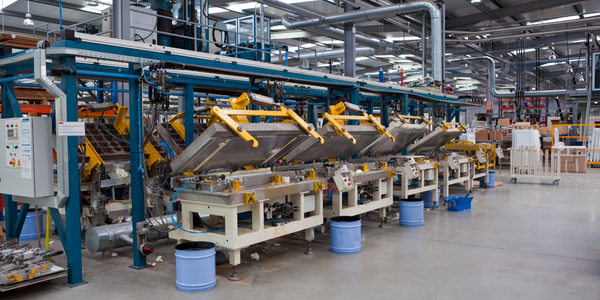用例
- 人员跟踪与监控
- 时间敏感网络
服务
- 系统集成
关于客户
Dingle Hospitality Group 是一家总部位于爱尔兰的酒店集团,在六个地点拥有 50 多名员工。该集团由五家酒店和一家洗衣服务公司组成,提供高品质的服务、豪华的住宿和旧世界的魅力。这些酒店可满足各种客人的需求,从情侣和家庭到婚礼宾客和企业团体。每家酒店均设有独立设计的卧室,配备最新技术、可持续实践和时尚设计。该集团致力于为所有客人提供四星级服务,无论他们是一日游、过夜、出差还是休闲。
挑战
Dingle Hospitality Group 是一家位于爱尔兰的酒店集团,其现有的员工管理软件面临着重大的运营挑战。该软件难以使用,并且未与薪资提供商 Sage 集成,导致薪资管理效率低下且复杂。该软件的排班功能也存在问题,经常会因为员工数量的增加而导致混乱。该软件无法提供预计工资支出的可见性,并且时间表是根据安排的小时数而不是劳动力成本或工资百分比等商业因素来批准的。此外,员工没有正式的请假流程,导致沟通不畅并浪费时间,因为管理人员必须筛选短信来跟踪谁请假。
解决方案
为了寻找更有效的解决方案,Dingle Hospitality Group 向 Bizimply 求助。基于云的系统提供了更加用户友好的界面,并与他们的薪资提供商 Sage 无缝集成。这种集成可以快速高效地交付工资单就绪的出勤数据导出。 Bizimply 还提供了准确的报告,使 Dingle Hospitality Group 能够分析其所有地点的业务绩效并确定需要改进的领域。该软件还改进了休假安排和管理的流程。员工可以通过该应用程序提交请求,甚至可以指明他们无法工作的重复日期。 Bizimply 的实施改善了经理和团队之间的沟通,员工认识到该软件在更高效地完成工作方面的好处。
运营影响

Case Study missing?
Start adding your own!
Register with your work email and create a new case study profile for your business.
相关案例.

Case Study
Goldcorp: Internet of Things Enables the Mine of the Future
Goldcorp is committed to responsible mining practices and maintaining maximum safety for its workers. At the same time, the firm is constantly exploring ways to improve the efficiency of its operations, extend the life of its assets, and control costs. Goldcorp needed technology that can maximize production efficiency by tracking all mining operations, keep employees safe with remote operations and monitoring of hazardous work areas and control production costs through better asset and site management.

Case Study
Cisco Kinetic for Oil and Gas: Refineries and Plants
The plant manager and safety teams needed a solution that provided near real-time visibility of gas detection and personnel location, with easy to understand visualization and alerting dashboards. This would enable them to improve productivity through decreasing the time taken to start work, optimize evacuation route planning, and to meet critical staff safety and compliance goals.

Case Study
Industry 4.0 at ALPLA: Enhancing Factory Efficiency with IoT
ALPLA, a global leader in packaging solutions, faced several challenges as the complexity of their production machinery increased. The need for highly trained specialists in each factory led to higher personnel costs, difficulties in recruiting experienced talent at each location, and costly personnel turnover. Furthermore, less experienced operators running the machines sub-optimally impacted resource consumption and overall equipment effectiveness (OEE). ALPLA also faced the challenge of monitoring visual inspection systems in every line of their plants, which was almost impossible to do manually. In 2016, ALPLA decided to use data from the 900 different types of embedded sensors in each factory to address these issues. However, their initial choice of SQL Server as the data store for the sensor data proved inadequate, as it was unable to cope with their data requirements.

Case Study
Digital Transformation of Atlanta Grout & Tile: An IoT Case Study
Atlanta Grout & Tile, a Tile, Stone & Grout restoration company based in Woodstock, Georgia, was facing challenges with its traditional business model. Despite steady growth over the years, the company was falling behind the web revolution and missing out on the opportunity to tap into a new consumer base. They were using independent software from different vendors for each of their department information and workforce management. This resulted in a lot of manual work on excel and the need to export/import data between different systems. This not only increased overhead costs but also slowed down their response to clients. The company also had to prepare numerous reports manually and lacked access to customer trends for effective business decision-making.

Case Study
Centralizing Data for Improved Efficiency: A Case Study on Malvern Panalytical
Malvern Panalytical, a UK-based hi-tech electronics company, was grappling with the challenge of decentralized data storage. The company had a vast amount of unstructured data scattered across various platforms, from hard drives to emails and floppy disks. This made the data searching process extremely cumbersome and inefficient. The company's rapid growth, from 200 to over 1,000 employees in a decade, and expansion across three continents further exacerbated the need for a more structured and centralized data system. As a company involved in electronics manufacturing and software development, it was crucial for Malvern Panalytical to find a platform that could structure all their data, track all modifications of documents in real time, and provide clear visibility of the internal information flow across all its facilities.








